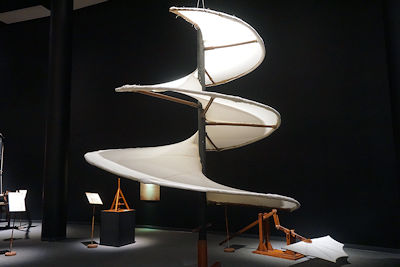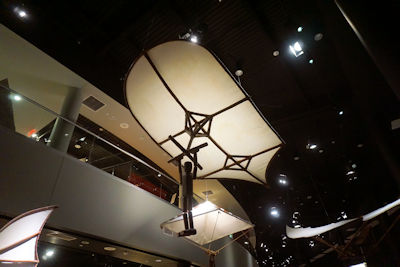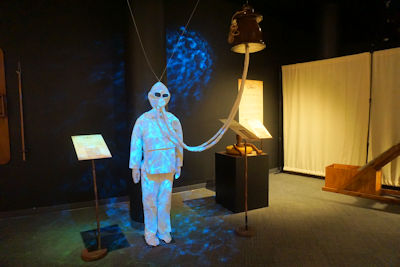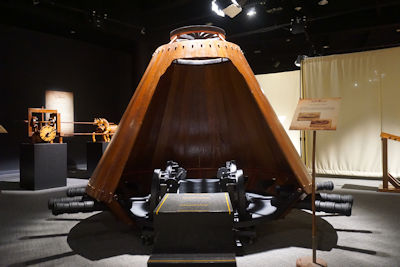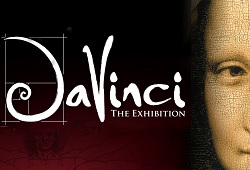
“Around the time that he reached the unnerving milestone of turning thirty, Leonardo da Vinci wrote a letter to the ruler of Milan listing the reasons he should be given a job,” Walter Isaacson explains in his 2017 biography, simply entitled Leonardo da Vinci. “In the first ten paragraphs, he touted his engineering skills, including his ability to design bridges, waterways, cannons, armored vehicles, and public buildings. Only in the eleventh paragraph, at the end, did he add that he was an artist. ‘Likewise in painting, I can do everything possible,’ he wrote.”
“I can do everything possible” is indeed a fitting epitaph for one of the greatest minds in recorded history. While such fellow giants as Sir Isaac Newton and Albert Einstein had the brain power to generate shattering insights into physics and the ways of the universe, Leonardo da Vinci’s genius instead stemmed from a thirst for knowledge and an ability to see the interconnections between art and science.
In February 2019, the traveling Da Vinci: The Exhibition made its way to Pittsburgh, Pennsylvania, courtesy of the Carnegie Science Center, and through September 2, 2019, enabled both residents and visitors alike to witness the genius of Leonardo da Vinci through hands-on experiences that not only told the story of da Vinci’s life but recreated the images and designs that sprung forth from his imagination.
Da Vinci: The Exhibition was conceived as a showcase of Leonardo’s understanding of science, mathematics, and nature, as well as their relationship with one another. Taking the sketches and drawings that da Vinci outlined in his numerous notebooks – from which over 7,200 pages remain intact – the exhibit employed trained artisans to construct full-scale models of the numerous devices he envisioned in the fifteenth century.
Many of his engineering achievements – such as cranes, pulleys, rolling mills, and chain cranks – were recreated within Da Vinci: The Exhibition as interactive components for visitors to test for themselves. Although Leonardo listed “artist” last amongst his credentials in his letter to Milan, the exhibit paid tribute to his accomplishments as a painter nonetheless with reproductions of his most famous creations, including a wall-sized The Last Supper as a centerpiece. Work tables containing paper and drawing utensils were also available so that burgeoning artists could create their own masterpieces.
Arguably da Vinci’s most well-known research was within the field of aviation. According to biographer Walter Isaacson, Leonardo’s fascination with flight originally stemmed from a curiosity about birds and the desire to understand what enabled them to stay aloft in the air. As was often da Vinci’s style, he formulated his theories by investigating the exact opposite – in this case, water. He quickly formulated the basic principles of fluid dynamics, later developed more fully by Sir Isaac Newton and Galileo Galilei, and the observation that bird’s wings could compress air and push the animal upward in ways that water cannot be compressed.
Da Vinci also developed a rudimentary hypothesis that would centuries later become known as Bernoulli’s principle – that when any fluid, including air, flows faster, it exerts less pressure. The top of a bird’s wing is thus curved more than the underside, causing air to travel farther on top as well as quicker, exerting less pressure and enabling it to stay airborne. The principle is still used today in the design of airplane wings.
While studying birds was the first step in contemplating how human beings could eventually fly, Leonardo da Vinci’s work within the theater also played a role in his later ruminations. He created mechanical birds and even flying machines that were nowhere near functional but gave the illusion of flight when attached to lifts and pulleys on stage.
By the late 1480s, da Vinci was ready to use his study of birds and dabbling in the theater to design actual devices that would enable people to soar through the sky, and many of them were recreated in Da Vinci: The Exhibition. From batwings to flapping paddles, hang gliders to aerial screws, an assortment of da Vinci’s drawings and sketches were brought to life in the meticulous detail that he originally envisioned.
Although none of them were actually operational – even da Vinci realized that a human being was incapable of taking flight simply by flapping a set of wings – many of the models are only a few tweaks and further revelations away from the hang gliders and aerial screws, better known as helicopters, that exist today.
It was not only in aviation that Leonardo showed an interest, however, as other sections of Da Vinci: The Exhibition contained recreations of his experimentations in the fields of music, optics, marine crafts, and military applications. In addition to flying machines, Leonardo da Vinci imagined submarines, deep-sea diving equipment, water skis, and armored tanks centuries before they became practical, all of which were on display within Da Vinci: The Exhibition.
Marcus Vitruvius Pollio was born 600 years before Leonardo da Vinci, but the two names would be forever linked by one of the most widely known and popular images in the world – da Vinci’s Vitruvian Man. Vitruvius was a Roman architect and writer whose works had been largely forgotten until the early 1400s and the rediscovery of his The Ten Books on Architecture.
Da Vinci read it and became inspired by the lines, “All the arts and all the world’s rules are derived from a well-composed and proportioned human body. Man, called a little world, contains in himself all the general perfections of the whole world.” Moreover, Vitruvius argued that the layout for the design of a temple should reflect the proportions of the human body, which he then outlined in meticulous detail.
Using the writings of Marcus Vitruvius Pollio as a guide, Leonardo da Vinci put pen to paper and meticulously crafted a “well-composed and proportioned human body,” which became known as Vitruvian Man and was likewise showcased within Da Vinci: The Exposition.
“He became the archetype of the Renaissance Man, an inspiration to all who believe that the ‘infinite works of nature,’ as he put it, are woven together in a unity filled with marvelous patterns,” Walter Isaacson writes in Leonardo da Vinci. “His ability to combine art and science, made iconic by his drawing of a perfectly proportioned man spread-eagle inside a circle and square, made him history’s most creative genius.”
Thanks to Da Vinci: The Exhibition, that genius was on display at the Carnegie Science Center in Pittsburgh just as it had been in other cities across the country. The exhibit likewise proved the power of imagination and observation, that art is as equally important as science, and that the combining of these competing forces can pave the way for creations that both inform and inspire.
“I can do everything” isn’t just the epitaph of Leonard da Vinci, but anyone with the will to see the world through a different set of eyes and embrace the wonders that it contains within.
Anthony Letizia
